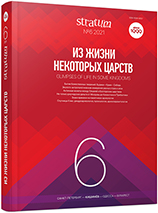Аю-Даг и другие свидетельства Гнева Господня
Ayu-Dag and other evidence of the Wrath of the Lord
Author(s): Vladimir P. KirilkoSubject(s): History, Archaeology, 15th Century
Published by: Издательский дом Stratum, Университет «Высшая антропологическая школа»
Keywords: Crimea; Ayu-Dag; Yalta earthquake in 1423; seismic dislocation; seismic event; calamity; natural catastrophe;
Summary/Abstract: An unusual shape of a laccolith in the southern coastal part of the Crimea, which, when seen from a distance, resembles a huge beast bending its muzzle to the water, could well determine its name, i. e. Ayu-Dag (Crimean Tatar — Ayuv Dağ, i. e. the Bear Mount). The legend about this toponym allegorically tells about a catastrophic earthquake, which the Crimean peninsula was exposed to in the Middle Ages. This natural phenomenon was reflected in three other local legends about the Castel Mount, Yalta and Sunen-Kaya. Most likely, this calamity took place during the first war between Kaffa and Theodoro, in October-November of 1423. In many ways, it can be compared with the notorious Yalta earthquake of 1927. The archaeological works on a number of medieval sites in the region can give a good idea of the consequences of the 15th-century seismic event, which embodied the wrath of the Lord: a monastery on the south-eastern slope of the Ayu-Dag, Funa’s fort, Kalamita and Cembalo, and Basilica in Eski-Kermen.
Journal: Stratum plus. Археология и культурная антропология
- Issue Year: 2021
- Issue No: 6
- Page Range: 35-51
- Page Count: 17
- Language: Russian
- Content File-PDF

